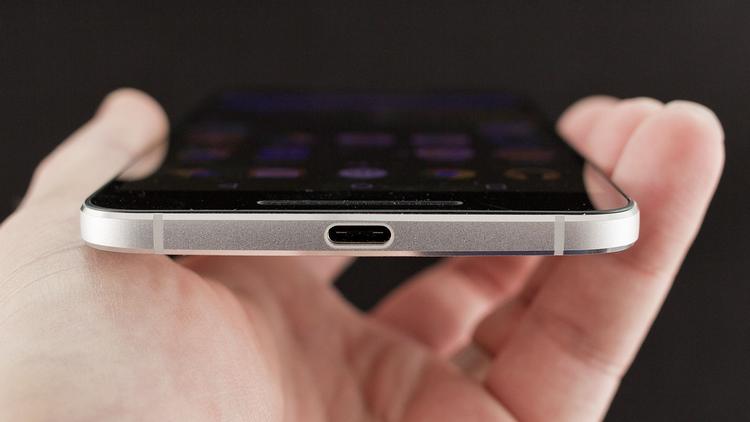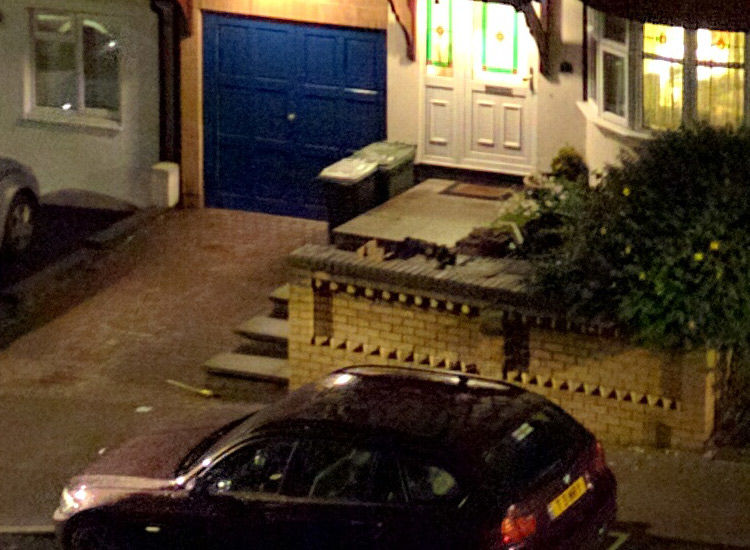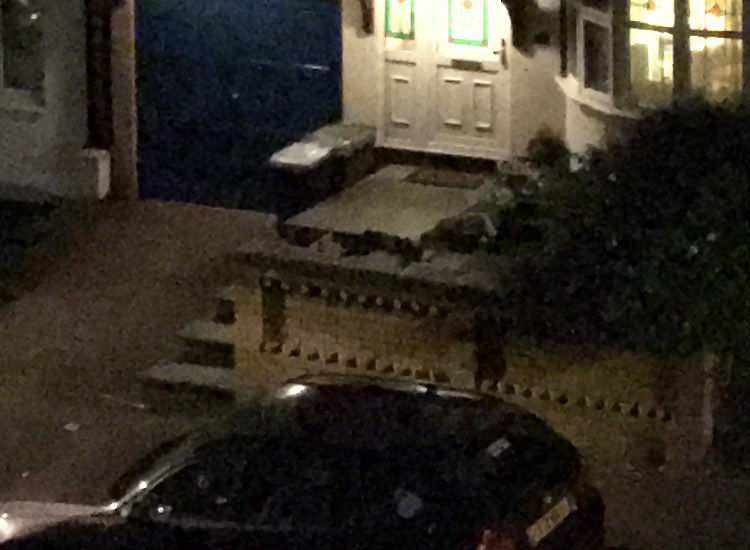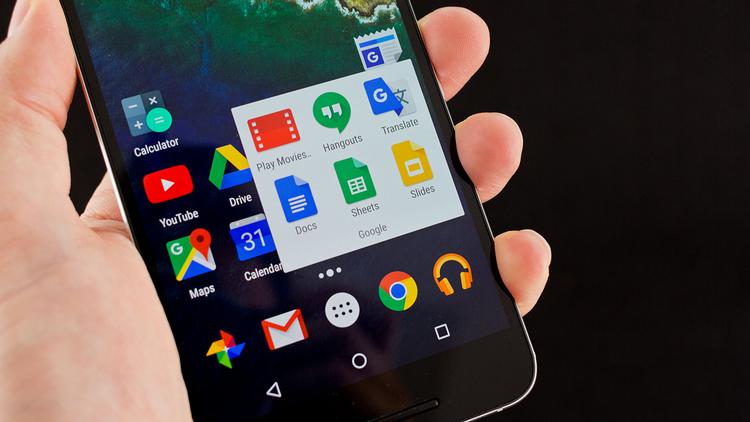Also see: Nexus 6P vs Nexus 6
Nexus 6P review: Price and availability
The Nexus 6P is available in Aluminium (silver), Graphite (black) and Frost (white). There’s a choice of 32-, 64- or 128GB of storage, and that’s your lot as there’s no microSD for adding extra capacity. But it is worth praising Google for going to 32GB on the base model unlike Apple which stubbornly sticks with 16GB. And let’s not forget that prices start at £449 – much cheaper than other current flagships. The 64GB model costs £499 and 128GB £579, from Google’s online store. With this you get a 90-day trial of Play Music , two USB-C cables in the box (one long C-to-C cable, one short C-to-full-size USB), headphones and a mains adaptor. Of course, you can also get a 6P on contract from around £32 (now around £20) per month for the 32GB model, with a minimal up-front fee for the phone. Also see: Best MiFi.
Nexus 6P review: Features and design
The Nexus 6P is the first all-metal Nexus flagship smartphone. It’s made of CNC-machined “aeronautical-grade aluminium” which Google says is “really nice”. And it is. It’s slim and sleek for a big phone and looks very much the part. It feels lighter than you anticipate – it’s pretty much the same size as an iPhone 6S Plus which weighs around 20g more. Last year’s iPhone 6 Plus weighs the same as the 6P, but wasn’t as strong – it bent in some people’s pockets. Recently, videos have been posted showing how “easy” it is to break the Nexus 6P in half. It may not be the strongest phone out there, but as long as you don’t grab it with both hands and try to snap it in half, then like the iPhone 6 Plus it’s probably going to be fine. Slightly more worrying is the small number of reports of the glass panel covering the rear camera spontaneously cracking or shattering. If Google or Huawei issues an official response, we’ll add it here. Also see: Nexus 6P in pictures Aside from this controversy, the phone looks better in the flesh than in pictures. Although the black strip of gorilla glass looks ugly, it’s not that bad when you see it for real. And the very slight buldge helps you work out which way is up by touch alone. If we’re being really critical, we don’t like the plastic panel which sits at the bottom of the rear side. It doesn’t quite match the aluminium in colour but – as with the top strip – hides antennae. The huge CE markings (not shown in the photos here of an early sample 6P) seem a bit unnecessary, though. Compared to the Nexus 6, the 6P is much more manageable to hold with one hand. It’s thinner by 3mm and the bigger screen-to-body ratio makes all the difference. While it’s not going to slip easily into a pocket (especially in a case) it’s going to be a lot easier to live with. Around the back – just as you’ll find with other Huawei phones such as the Mate S – is a fingerprint scanner, called Nexus Imprint. This will come in handy for Google Pay and – eventually – third-party apps, although there’s still no confirmed launch date for Google Pay in the UK. You can register five fingers and there’s no need to wake the phone before using it. Your index finger almost falls naturally onto the sensor when you pick up the phone – it’s something we quickly adjusted to. Like the iPhone 6S the scanner is very fast, recognising your print almost instantaneously and waking and unlocking the phone. At the front are stereo speakers and there are three mics – two on the front and one on the rear. Compared to phones with speakers at the back or on the bottom edge, sound quality is excellent and there’s plenty of volume. To add to the disappointment of non-expandable storage, there’s an irremovable 3450mAh battery. Google says the support for fast charging gives you up to seven hours of use from only 10 minutes of charging. However, you’ll need to use the included charger. When we hooked up to our in-wall USB charging plate, we saw the battery go from 7 percent to 28 percent in 30 minutes. That’s no quicker than an iPhone 6s Plus charges. But with the official charger (which has a USB-C port on it), the phone charges from 15 to 30 percent in a little over 10 minutes and 15 to 90 percent in just over 30 minutes. Fast charging is most effective when the battery is very depleted, though.
Nexus 6P review: 5.7in screen
If you like big screens, you will love the 6P’s 5.7in AMOLED display that’s protected by Gorilla Glass 4 which is fitted flush into the aluminium frame. The resolution – as you’d expect of a premium Android flagship – is a quad-HD (2560×1440). It’s by no means the first to have this resolution, but it looks gorgeous, with eye-popping colours and detail. Viewing angles, of course, are very wide and contrast is fabulous. The high resolution also helps when taking photos and videos as its much easier to see when things are in focus (or blurry). Look as close as you like: you can’t see the individual pixels that make up the screen. The screen looks good at any screen brightness including when dim – something other AMOLED phones fail at. The tech also offers battery-saving potential. When you pick up the 6P, notifications are shown in mono and only the necessary pixels are lit up. Off-centre it’s possible to notice a rainbow effect – like an oil slick that covers the screen – but for the majority of time you won’t see it.
Nexus 6P review: Hardware and performance
The 6P is powered by a Snapdragon 810 v2.1 octacore processor (as also used in the OnePlus 2). It has Adreno 430 graphics and is backed by 3GB of RAM. As you can see in our graphs, it’s not the quickest by any means. In use, it’s more than fast enough but we were frustrated by the odd moment of hesitation when using certain apps or changing certain settings.
A handy feature is being able to double-press the power button to launch the camera app, which starts quickly and means you can take a photo almost as soon as the phone is out of your pocket. Thoughfully, the button has a rough texture so your finger can differentiate it from the volume rocker below. The battery lasts a day with general use. It’s the same story as for other flagships: use it lightly and you’ll get a day and a half, but hammer it (with games and shooting 4K video) and you will be reaching for the USB-C cable at dinner time. But Android Marshmallow brings new power features to the table: App standby and Doze. The former closes down apps which haven’t been used, which helps a little, but Doze is superb. When your phone is in standby and not moving – i.e. sitting on your desk or coffee table – Doze kicks in automatically and shuts down whatever it can. You don’t need to enable it as it’s part of the OS. Only high-priority alerts will get through, such as text messages. Others, like a reply to a Facebook post, won’t. What it means is that your 6P’s battery won’t drain overnight if you forget to put it on charge: our sample – kindly lent to us by MobileFun.co.uk – went down only a couple of percent in 9 hours. In terms of connectivity ,there’s dual-band 2×2 MIMO 802.11ac, Bluetooth 4.2, NFC, GPS and LTE. And along with the fingerprint sensor, there’s an accelerometer, gyroscope, barometer, proximity sensor, ambient light sensor and hall sensor (this is so compatible cases with magnets can automatically wake the phone).
Nexus 6P review: Audio
Speaker Quality The Google Nexus 6P’s dual front-facing stereo speakers’ output is extremely loud, where out of the other phones we tested, found it to be the loudest one we’ve come across. It scored 9.5/10 in our loudness test, which left us very impressed as it was able to deliver a loud volume through its large stereo speakers. However, when cranked up to the maximum volume, we found the speakers to sound a little distorted and become a little less accurate through its frequency range. Also see: Best Sounding Phones of 2016. The speakers’ sound quality did reasonably well, where its bass was present through its mid-bass slam, but found its sub-bass didn’t extend that well. The phone’s mids are extremely well presented though the two front-facing speakers, where they had great imaging and tonality. The highs were slightly rolled off, but did provide us with a nice sparkle and produced a decent extension. Finally its soundstage is greatly aided by its dual front-facing speaker design, which has good instrument separation and tonality. Internal Sound Quality The Nexus 6P utilises a SoC (system on chip) Qualcomm MSM8994 Snapdragon 810, which is presumed to be using the Qualcomm WCD9330 Audio Codec. We found the Nexus 6P’s sound quality absolutely sensational, where it ranked among one of the Best Sounding Phones of 2016. However, the phone really had to be driven in order to compete with other phones on the market, where we had to use it at 90-95 percent volume in order to test it. In comparison, the Samsung Galaxy S6 was tested at 55-60 percent and was able to deliver the same output power. We also found it to have slight problems when its auxiliary jack is amplified, where we heard distort, hiss and even create popping sounds whilst being left idle on the lockscreen. Regarding its sound quality, we found the sub-bass to be present but cut-off, whereas in comparison found the mid-bass to have a fantastic slam and control. Despite its good mid-bass slam, the mids were not that affected, where the phone was able to reproduce a clean and accurate sound. We found its highs to be well presented, as they were well extended and didn’t roll-off. The Nexus 6P did have a little sibilance to it, which could be a cause for concern for those using more sensitive earphones and headphones. Finally, we found its soundstage to be the real star of the show, where its instrument separation was top class for a smartphone and its tonality was able to complement the phone’s overall sound signature very well.
Nexus 6P review: Cameras
Update April 2016: We’ve pitted the latest 8 flagship phones against each other in a mammoth video and photo comparison. And the good news for the 6P is that is still comes out ahead of most of its 2016 rivals. Yes, it may lack optical stabilisation and the option to record video at 60fps, but in every other respect it is still one of the best cameras on a smartphone. It’s beaten overall by the Samsung Galaxy S7, but the fact that you can buy a 6P unlocked for £379 (a promotion running until 6th May 2016) means it is fantastic value. In previous Nexuses, the camera has been a bit of a sore point. LG, Motorola and others haven’t managed to put in a camera worthy of the ‘premium’ tag. However, the 12.3Mp Sony sensor in the 6P changes all that. It may not have the highest resolution, but anyone that knows anything about cameras will know that larger pixels – bigger receptors – capture more light and therefor more accurately capture colours. It’s not always true, but this is most certainly the best camera on any Nexus phone. The pixels are 1.55 microns in size – compared to 1.22 in the iPhone 6S Plus, for example. (The 6 Plus had 1.55-micron pixels, but was only 8Mp.) This help indoor photography in particular, where there’s much less light. You also get slo-mo video, at 240fps in 720p, and you can select the section of video to slow down in the Google Photos app. A burst mode shoots at 30fps and you can then choose your favourite later from a selection of eight. The phone can also make an animated GIF from these, which is obviously highly shareable unlike Apple’s new Live Photos. In our tests the main camera performed admirably. For the most part the laser autofocus did its thing, working quickly and accurately. There were still around 10 percent of blurry shots, some of which shouldn’t have been as nothing was moving in the frame. But the other 90 percent were largely spectacular. Images are processed – obviously – and the sharpening and saturation may be overdone for some tasted, but we loved it. Flowers, foliage, grass, fur: everything is sharp and detailed. (Click to enlarge photos.) Here’s a 100 percent crop of the photo above: Macro shots are great as well, and the ability to tap the screen to set a focus point, then use the volume buttons to take the shot instead of stabbing the on-screen button and wobbling the camera is great. Again, the 100 percent crop shows the detail and sharpness: Another crop (not 100 percent) of a flower photo (click to enlarge): In low light, the 6P does a great job of retaining detail, albeit seemingly at the expense of colour noise. In the photos below, it’s clear the 6P’s image is too saturated compared to the iPhone 6S Plus. But the 6S Plus’ effort lacks detail – the smudging effect is likely a result of the noise reduction system. First the 6P (click to enlarge): Here’s a 100 percent crop: The same shot (taken at the same time) on the iPhone 6S Plus shows that it simply cannot resolve the same level of detail in low light: Here’s the 100 percent crop to show the actual detail: The Nexus 6P’s videos, too, are excellent. 4K footage has the expected detail, along with vibrant colours. The speedo icon in the native camera app makes it easy to flip between 30, 120 and 240fps (changing resolution as you go) but there’s no support for 1080p/60. We sincerely hope this is added in an update. Here’s a clip of 4K footage from the phone (be sure to watch on a 4K monitor and select 2160p from the quality menu):
But the camera app is well designed and sensibly defaults to the highest resolution for photos on both front- and rear cameras. There’s also tight integration with Google Photos, which is both a great app and a great service. For example, you can turn off ‘creations’ in the camera app’s bust mode settings. The app also supports HDR, panoramas and photo spheres (the latter of which stitches photos so you can explore the full 360-degrees of a scene). Let’s not forget the front camera in all of this. The 8Mp sensor is also capable of great photos: sharp and with lots of detail. It’s ideal for selfies and has a wide-enough field of view to get two people in the shot at arm’s length. It will also record 1080p video at 30fps. Panoramas (or wide selfies) aren’t currently supported in the app, though.
Nexus 6P review: Software
Out of the box, the 6P has Marshmallow – Android 6.0. With it comes several new features. Now on Tap allows you to get context-sensitive information ‘cards’ by holding the home button. That might not sound all that different from Google Now in Lollipop, but the difference is that it will work within apps, offering information relevant to that app. In many other ways, Marshmallow looks very similar to Lollipop with minor tweaks here and there. The are individual volume sliders for media, notifications and alarms, for example. You can find out more about Android 6 in our more in-depth Marshmallow article. Jim has been testing and reviewing products for over 20 years. His main beats include VPN services and antivirus. He also covers smart home tech, mesh Wi-Fi and electric bikes.
















